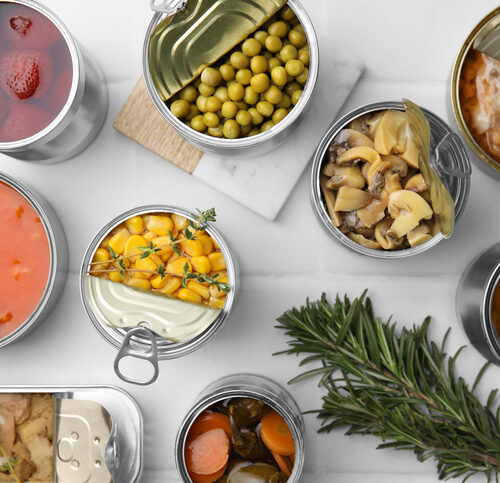
Maintaining eye health is an important part of managing diabetes. Here’s what you need to know about the lifestyle tweaks that will help protect your vision.
Around 1.3 million Australians and at least 300,000 people in New Zealand are living with diabetes, a disease where the body can’t control its blood sugar levels properly. This occurs because the pancreas can’t make any or enough insulin (the hormone that regulates blood glucose levels), or because of insulin resistance, where the body can’t properly use the insulin it does produce.
While 300,000 Kiwis have been diagnosed with diabetes, it’s estimated that another 100,000 are living with undiagnosed diabetes. This is a concern because the sooner diabetes is diagnosed, the more opportunity there is to manage blood glucose levels and help protect against diabetes-related complications and prevent serious eye conditions.
Australian studies have also shown that many people are living with undiagnosed type 2 diabetes, but the exact number is unknown.
How to take care of your eyes
In addition to having regular diabetes eye checks every two years, there are other things people with diabetes can do that can help delay or prevent eye damage.
It’s also possible to prevent eye damage from getting worse if it’s already present, so it’s worth being vigilant about eye care.
Take steps to help maintain healthy blood glucose levels. Consistently high blood glucose levels increase the risk of developing more serious eye problems.
Work on lowering your blood pressure if you need to. High blood pressure (hypertension) can also increase the risk of experiencing eye problems if you have diabetes. Limiting your salt and alcohol intake, being physically active, achieving and maintaining a healthy weight and eating a healthy diet can all help you manage your blood pressure.
Quit the smokes
Smoking has been linked to an increased risk of developing diabetic retinopathy, so if you smoke, consider quitting.
For support, visit:
AU www.quit.org.au/ or call 13 78 48 NZ quit.org.nz or call 0800 778 778.
Most common types of diabetes
TYPE 1 is where the body’s immune system destroys the insulin-producing cells in the pancreas so it can’t produce insulin any longer. Caused by a mix of genetics and unknown factors, type 1 diabetes can’t be prevented and management requires lifelong insulin via pumps or injections.
TYPE 2 is where insulin resistance is present, or the pancreas doesn’t produce enough insulin. Nine out of 10 people with diabetes have this type, but the majority of cases could be prevented. Management incorporates diet, exercise and medication.
GESTATIONAL DIABETES occurs during pregnancy. It usually goes away once baby is born, but women who’ve had it have a significantly increased risk of developing type 2 diabetes in the future.
What to watch for
See your doctor immediately if you notice any changes in your vision
Changes to watch for:
➜ if your vision becomes blurry
➜ if you’re having trouble reading
➜ if you start to see double
➜ if one or both of your eyes hurt
➜ if you feel pressure in one or both of your eyes
➜ if you notice spots or floaters in your vision
➜ if you can’t see things out of the side of your eyes as you used to
Maintain healthy cholesterol levels
Like high blood glucose levels and hypertension, high cholesterol levels are a risk factor for serious diabetes-related eye problems. Eating a healthy diet low in saturated fat can help prevent or even reduce high cholesterol levels over time. Not smoking, limiting alcohol, reducing excess body fat and increasing our daily movement can also help.
How diabetes can affect eye health
Diabetes can cause both short and long-term eye problems. While high blood glucose levels can cause vision to blur temporarily, some of the complications of diabetes include diabetic retinopathy, cataracts and glaucoma.
Over time, diabetes can also damage the tiny blood vessels in the back of the eye.
When this damage leads to the vessels leaking fluid or blood, it causes the condition diabetic retinopathy. This is a common complication of diabetes, affecting one in three people with the disease, and left untreated it can lead to permanently reduced vision or even blindness.
Fortunately, when it’s caught early, diabetic retinopathy can often be successfully treated– or at least prevented from becoming worse.
Food and nutrition for diabetes
Guidelines for eating well with diabetes are the same as the healthy eating guidelines recommended for everyone.
Diabetes-friendly swaps
Blood glucose levels are affected by the amount and type of starchy or sweet food you eat or drink. Foods with a lower glycaemic index (GI) have less impact.
Swap jasmine rice (GI 82) for low-GI brown rice (GI 54)
Dried rice noodles (GI 61) for soba noodles (GI 46)
Oat milk (GI 69) for reduced-fat soy milk (GI 45)
Désirée potato (GI 101) for low-carb white potato (GI 53)
Golden syrup (GI 63) for agave syrup (GI 28)
Enjoy a variety of foods:
✔ Vegetables and fruit Aim for 5-6 servings of vegetables and 2 servings of fruit daily.
✔ Grains Choose wholegrain bread, rice, cereals and pasta. These are high in fibre and contain vitamins and minerals.
✔ Milk and dairy products (or alternatives) Choose low or reduced-fat dairy products, and calcium-fortified non-dairy alternatives.
✔ Legumes, nuts, seeds, fish and other seafood, eggs, poultry or red meat Remove visible fat from meat or chicken.
TO HELP MANAGE DIABETES:
✔ Include some carbohydrate, such as whole grains or starchy vegetables, with each meal– but not too much.
✔ Choose whole, unprocessed foods over processed or packaged foods.
✔ Eat a diet lower in fat, particularly saturated fat.
✔ Spread meals evenly across the day.
✔ Learn how much carbohydrate, and which types, work best for your blood sugar levels.
Keep it in check!
Early detection can make all the difference in the treatment of diabetes-related eye conditions, so keep up the regular eye checks, even if there are no obvious symptoms.
Article sources and references
- AIHW. Diabetes. https://www.aihw.gov.au
- Better Health Channel. Blood pressure.https://www.betterhealth.vic.gov.au
- Better Health Channel. Cholesterol.https://www.betterhealth.vic.gov.au
- Better Health Channel. Diabetes. https://www.betterhealth.vic.gov.au
- Diabetes Australia. Carbohydrates, protein and fats.https://www.diabetesaustralia.com.au
- Diabetes Australia. Healthy diet for diabetes.https://www.diabetesaustralia.com.au
- Diabetes New Zealand. Diabetes and healthy food choices.https://www.diabetes.org.nz
- Diabetes New Zealand. Eyes. https://www.diabetes.org.nz
- Diabetes New Zealand. Food and nutrition for type 2 diabetes.https://www.diabetes.org.nz
- Diabetes New Zealand. What is diabetes? https://www.diabetes.org.nz
- Glycemic Index Foundation. Swap it page.https://www.gisymbol.com
- HealthDirect. Type 2 diabetes. https://www.healthdirect.gov.au
- Heart Research Institute NZ. Diabetes. https://www.hri.org.nz
- Ministry of Health NZ. Diabetes.https://www.health.govt.nz
- NZ Nutrition Foundation. Food groups.https://www.nutritionfoundation.org.nz
- Quitline. Homepage. https://www.quit.org.nz
- Sliwinska-Mosson M, Milnerowicz H. 2017. The impact of smoking on the development of diabetes and its complications. Diab Vasc Dis Res. 14(4):265-276.
- The University of Sydney. GI Search.https://www.glycemicindex.com
- Website of the Australian Government Department of Health and Aged Care. Smoking, vaping and tobacco. https://www.health.gov.au
www.healthyfood.com










